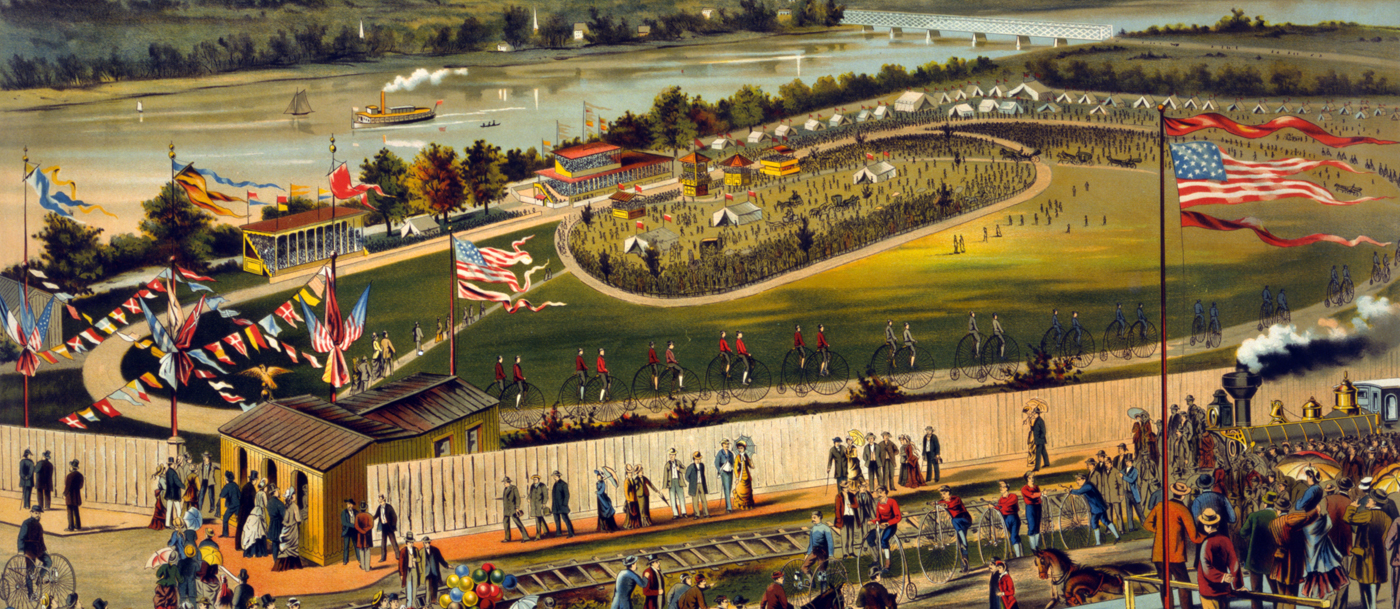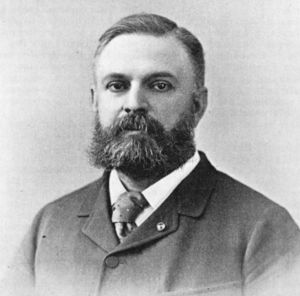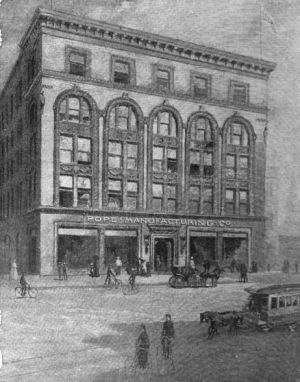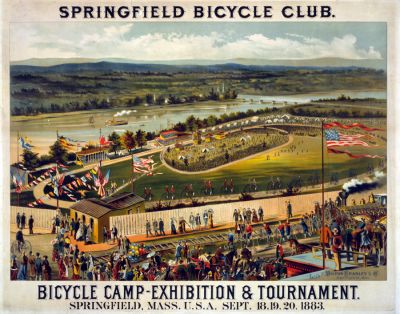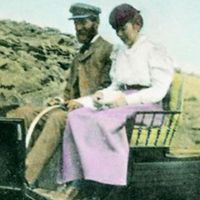Primary Source
A WHEEL AROUND THE HUB
The meet [on September 11-12,1879] was entirely informal. Personal invitations had brought together individual members of seven or eight bicycle clubs and also several amateurs from the unofficered ranks of the "unattached." A rosy September morning smiled on them as they glided by ones or twos toward the place of meeting. This was the foot of a broad, winding avenue in ancient Roxbury, now a part of the municipality of Boston. Roxbury had seen many bicycles, but never so many at once.
There was something novel in the diversity of dress, in the equipments with knapsacks and . . . bags, portending a journey. The uniforms of the Boston Bicycle Club and the Massachusetts Bicycle Club were familiar, but the gray costumes of the Worcester Bicycle Club, the white flannel shirts of the Hartfords, and the blue polo caps, marked "E. Bi. C.," and the strange attire of the Newark, Washington and Salem men were remarked, by the early-morning business men, on their way to town.
Carriage people reigned up to look, and teamsters to have a pleasant word: the street circulation of Roxbury had a stoppage. The community went into committee of the whole to consider a novel state of facts and canvass the prospects: ladies smiled from the windows and piazzas, children thronged the walls, and the irrepressible small boy shied his cap at the gleaming spokes and cried, "Mister, your wheel's loose!"
Charles E. Pratt, "A Wheel Around the Hub," in Scribner's Monthly, vol. 19, Issue 4 (February 1880).


